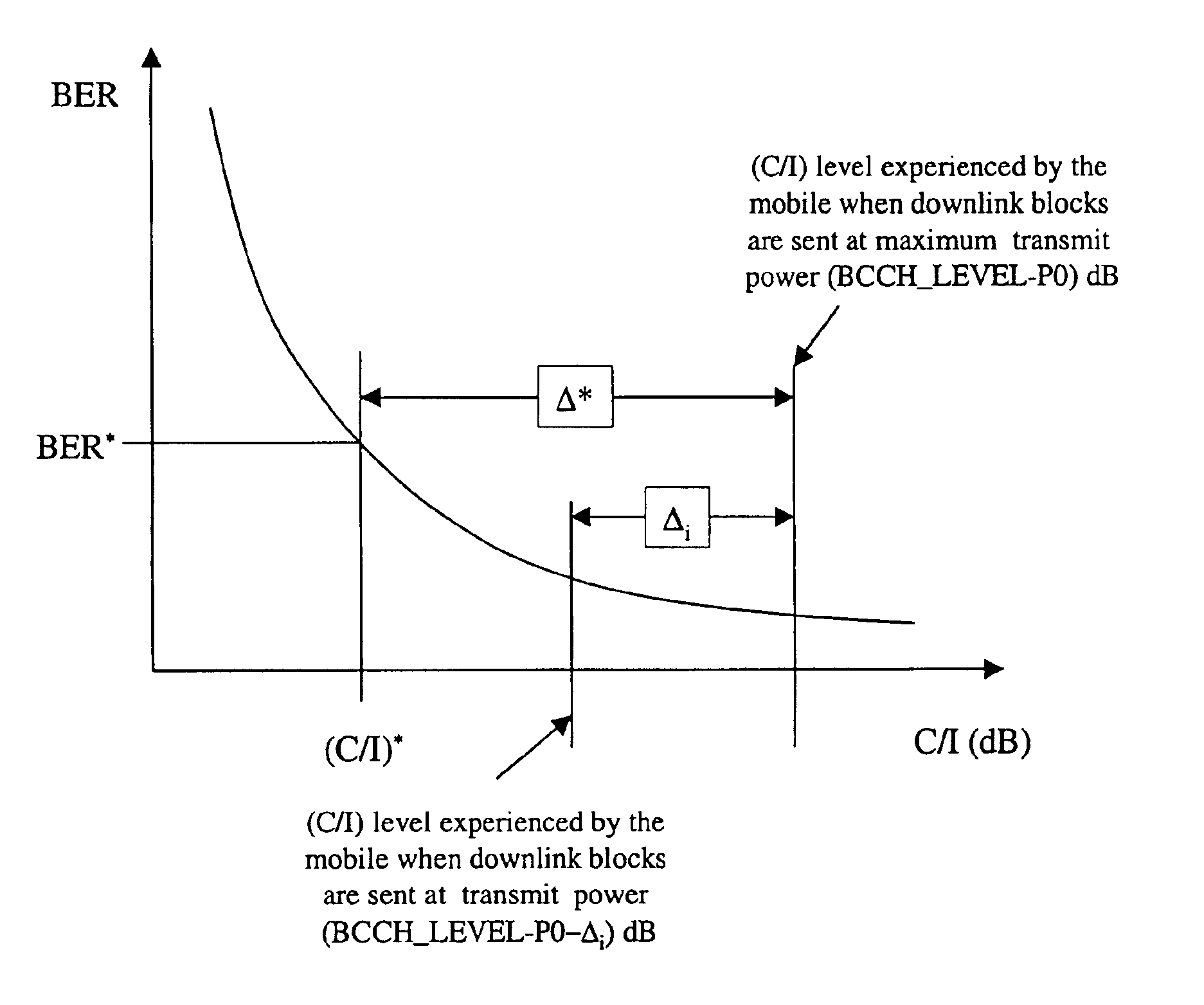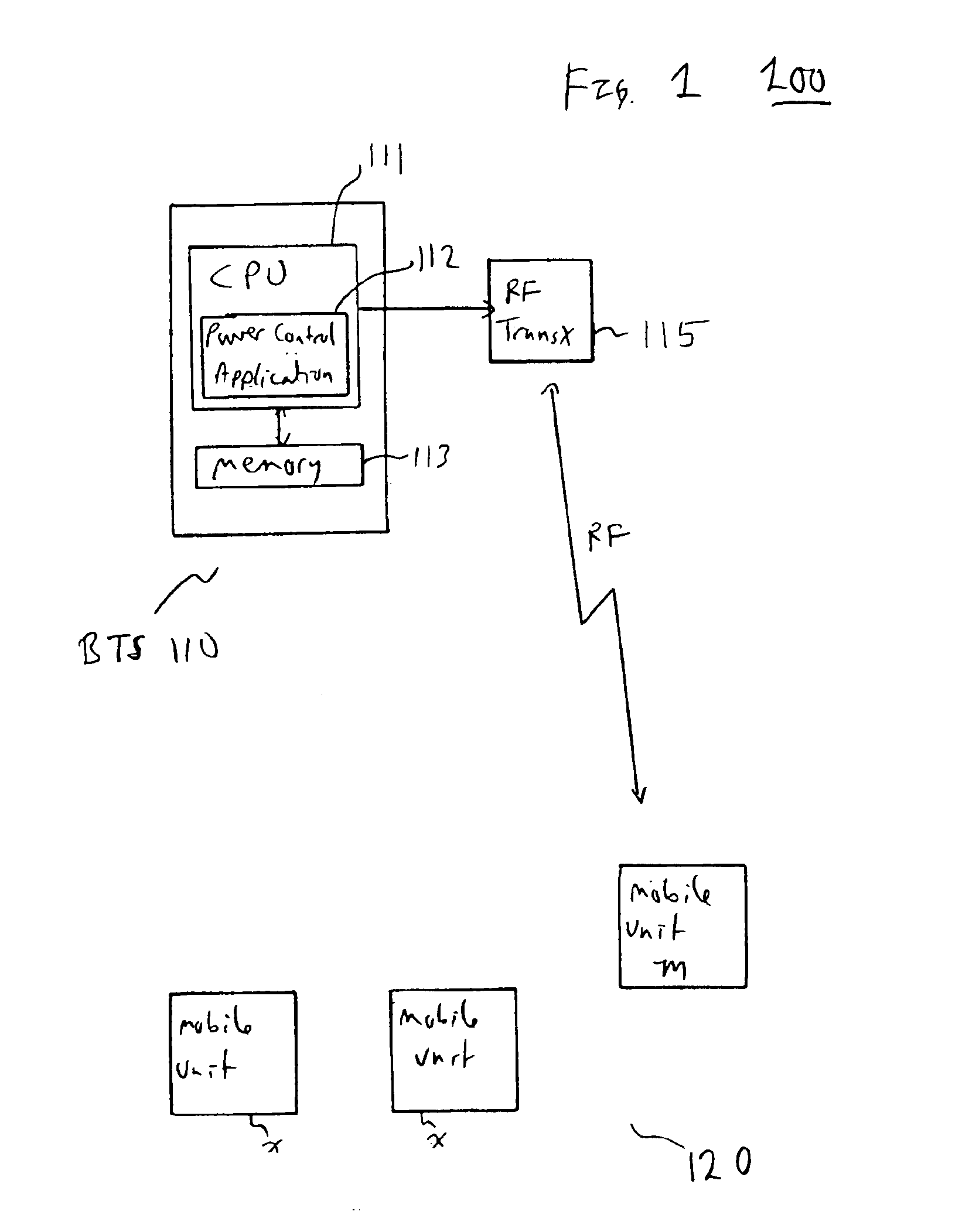Downlink power control method for wireless packet data network
a power control and wireless packet technology, applied in power management, wireless communication, transmission, etc., can solve the problems of increasing the carrying capacity of data traffic of a cell, not being corrected, and airlink errors being detected
- Summary
- Abstract
- Description
- Claims
- Application Information
AI Technical Summary
Benefits of technology
Problems solved by technology
Method used
Image
Examples
Embodiment Construction
In the present invention, a GPRS downlink power control method or algorithm is provided to control the power used for downlink transmissions of each block. The GPRS downlink power control method of the present invention operates, in a preferred embodiment, within the GPRS power control framework outlined in the ETSI GPRS 05.08 system specification, described above. In an embodiment, a group of blocks is transmitted between polling or measurement intervals. The last block polls the mobile station for airlink quality. This airlink quality measurement reported by the mobile is an average of the airlink quality of a previous group of blocks. Each block of a group of blocks is transmitted at a potentially different power level, however. The downlink power control method of the present invention determines an initial or baseline power transmission level for blocks of the next group of block, and a potentially different power level for each block of the group of blocks, based on the averag...
PUM
 Login to View More
Login to View More Abstract
Description
Claims
Application Information
 Login to View More
Login to View More - R&D
- Intellectual Property
- Life Sciences
- Materials
- Tech Scout
- Unparalleled Data Quality
- Higher Quality Content
- 60% Fewer Hallucinations
Browse by: Latest US Patents, China's latest patents, Technical Efficacy Thesaurus, Application Domain, Technology Topic, Popular Technical Reports.
© 2025 PatSnap. All rights reserved.Legal|Privacy policy|Modern Slavery Act Transparency Statement|Sitemap|About US| Contact US: help@patsnap.com



